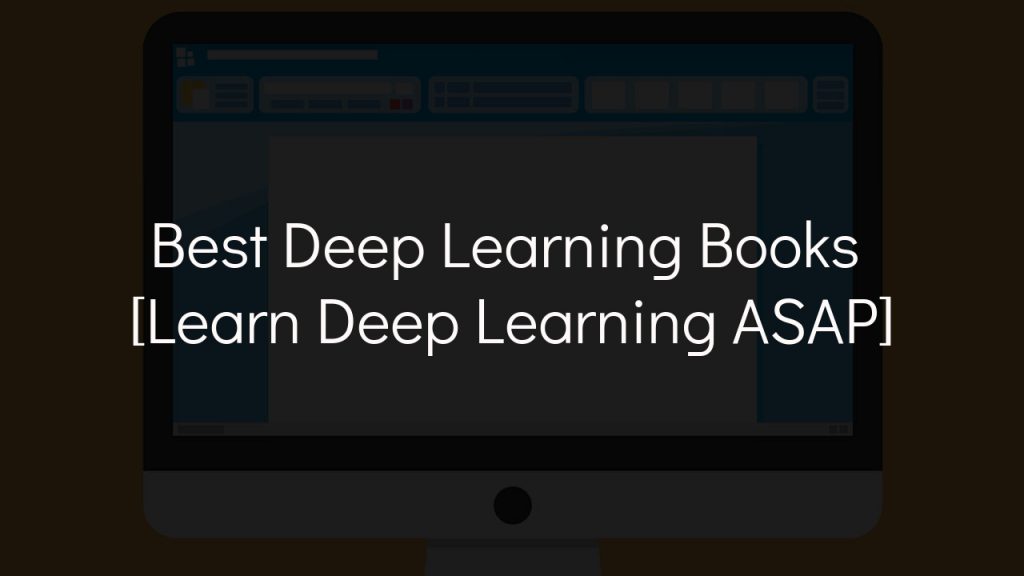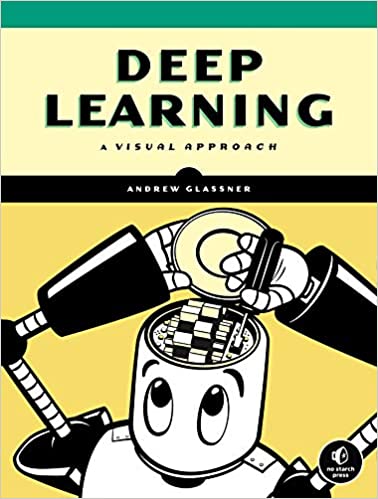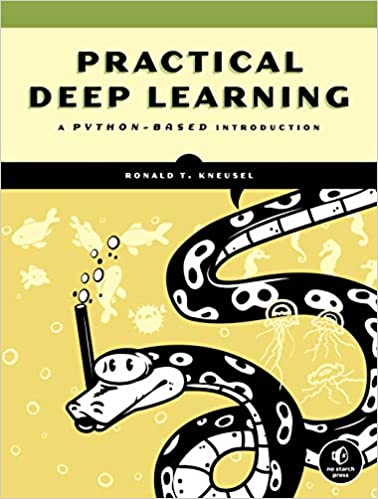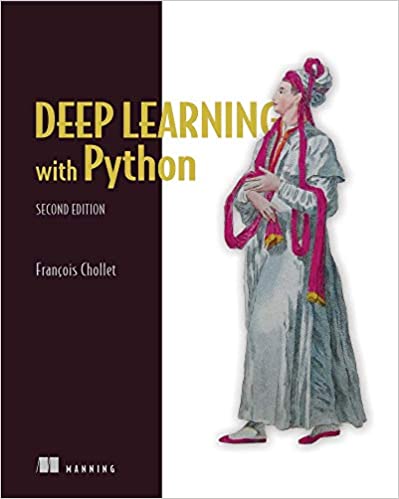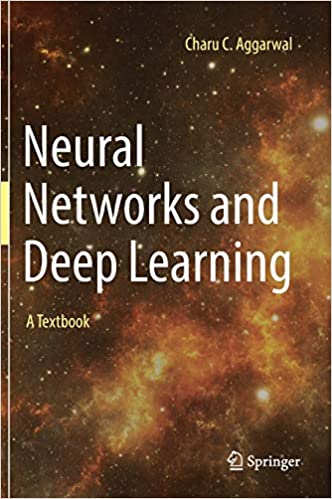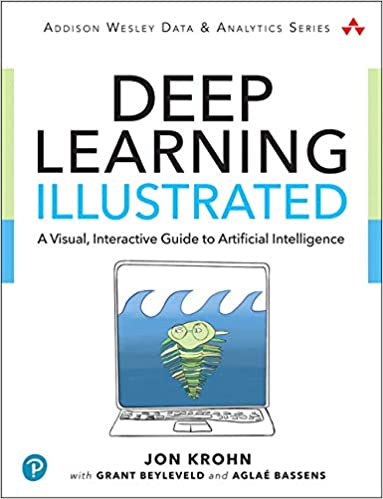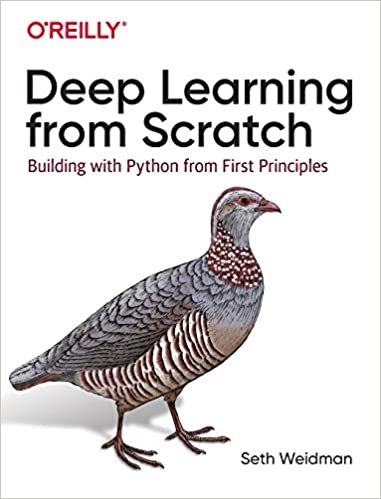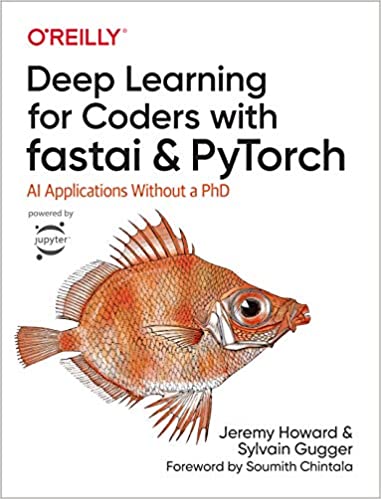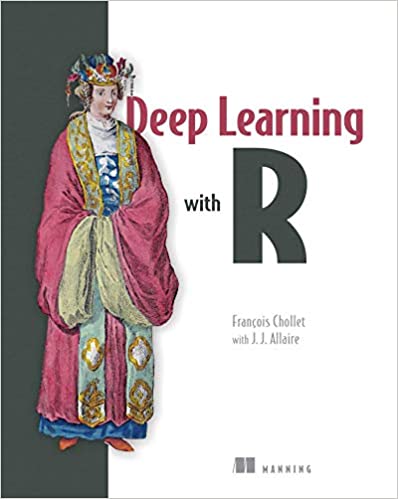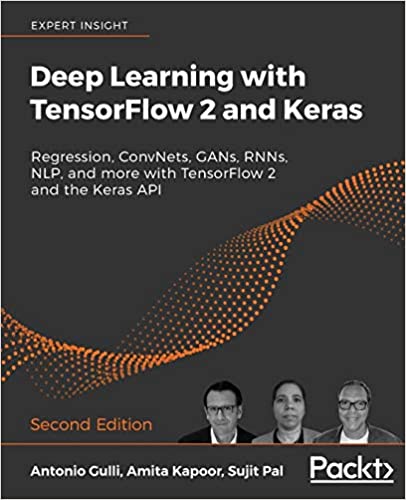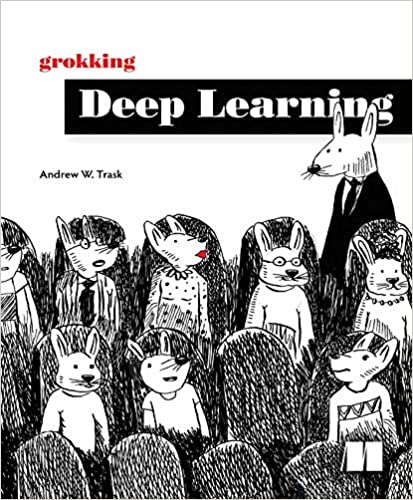What is deep learning?
Deep learning is a type of machine learning that mirrors the function of human brains. 🧠
Its artificial neural networks simulate our biological neural networks and process information in a similar fashion.

It does so by giving “weight” (importance) to different aspects and filtering objects through nodes. This gives a greater chance of outputting accurate results.
And, like human brains, deep neural networks will try to compare new objects with known objects.
Sounds like a lot to chew. Where can I begin learning about deep learning?
You can get started today with our list of the best deep learning books of this year.
This post contains affiliate links. I may receive compensation if you buy something. Read my disclosure for more details.
TLDR: Best Deep Learning Books
🔥 Best Overall 🔥
Deep Learning: A Visual Approach
💥 Best for Newbies 💥
Practical Deep Learning: A Python-Based Introduction
💸 Best Value 💸
Deep Learning with Python, 2nd Edition
Best Deep Learning Books
1. Deep Learning: A Visual Approach
🚨 Ideal for: deep learning beginners
💥 Major topics: deep learning systems, image classification systems, text generators
No Starch Press hasn’t published a bad book yet. We’re fanatical about this publisher over at RealToughCandy.
Deep Learning: A Visual Approach by Andrew Glassner is the newest deep learning release on No Starch Press.
💡 No Starch Press is a book publishing company that touts itself as “the finest in geek entertainment.”
Unlike many deep learning books, you don’t need to know complex math in.
🍷 Pairs well with the course A Beginner’s Guide to Deep Learning on Educative.io.
With color illustrations, analogies and real-world examples, you’ll learn key deep learning concepts including how:
- deep learning systems learn to play human games
- image classification systems identify people in photos
- text generators create stories
And much more.
2. Practical Deep Learning: A Python-Based Introduction
🚨 Ideal for: deep learning beginners
💥 Major topics: Python, deep learning libraries, neural networks
Practical Deep Learning by Ron Kneusel is another book by the ever-awesome, always delivering No Starch Press.
🍷 Pairs well with the course Introduction to Deep Learning with Keras on DataCamp.
As a complete newbie, you’ll learn how to train neural networks by building datasets and models. You’ll also:
- get a refresher in Python
- discover libraries scikit-learn and Keras
- explore model performance evaluation
And beyond.
Finally, you’ll develop a machine learning model from scratch.
Before reading Practical Deep Learning, you should be familiar with computer programming and high school math.
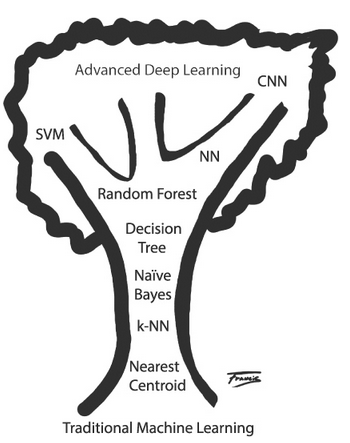
🔥 Geena’s Hot Take
We. 👏 Love. 👏 No. 👏 Starch. 👏 Press. 👏 Books. 👏
If you’ve never bought a deep learning book before, don’t waste your money on anything else. You just aren’t going to find the same quality of information you’ll find in No Starch Press.
3. Deep Learning with Python, 2nd Edition
🚨 Ideal for: deep learning beginners
💥 Major topics: computer vision, natural language processing, generative models
Best-selling Deep Learning with Python was written by the creator of the Python library Keras, Francois Chollet. On its second edition, there’s over 50% new content.
With this comprehensive introduction to deep learning, you’ll use Python and Keras to explore:
- computer vision
- natural language processing (NLP)
- generative models
💡 A generative model includes the distribution of data and informs you of the probability of a given example.
You’ll learn all this and more using practical examples and deep, intuitive explanations.
4. Neural Networks and Deep Learning
🚨 Ideal for: grad students, researchers, practitioners
💥 Major topics: deep reinforcement learning, recurrent neural networks, restricted Boltsmann machines
💡 Neural networks are algorithms designed to recognize patterns. They’re loosely designed after the human brain. These algorithms make up the backbone of deep learning.
Unlike the first three books on our list, Neural Networks and Deep Learning by Charu Aggarwal is not for beginners. It’s for grad students, researchers and practitioners.
First you’ll learn the basics of neural networks and their relationship to machine learning.
Then you’ll learn the fundamentals of neural networks. This includes radial-basis function neural networks and restricted Boltzmann machines.
Finally, you’ll examine advanced neural networks concepts such as recurrent neural networks and deep reinforcement learning.
The theory in the book gives great intuition on what is going on with deep neural networks…
– Serge, Customer
5. Deep Learning Illustrated: A Visual, Interactive Guide to Artificial Intelligence
🚨 Ideal for: advanced deep learning beginners
💥 Major topics: theory, deep learning libraries, techniques
Deep Learning Illustrated by John Krohn, Grant Beyleveld, and Aglae Bassens is one of the best deep learning books for a high-level introduction to deep learning.
You’ll start by learning the basics: what deep learning is, how it relates to artificial intelligence, machine learning and artificial neural networks.
🍷 Pairs well with the course Introduction to Deep Learning with Python on DataCamp.
Then you’ll discover deep learning techniques. Finally, you’ll explore deep learning libraries such as TensorFlow, Keras, and PyTorch.
6. Deep Learning from Scratch: Building with Python from First Principles
🚨 Ideal for: data scientists and software engineers with machine learning experience
💥 Major topics: neural networks
Deep Learning from Scratch by Seth Weidman is one of the best deep learning books for data scientists and software engineers with machine learning experience.
You’ll start by learning the basics of deep learning. But you’ll quickly graduate to advanced architectures.
Then you’ll learn about and build different types of neural networks from the ground up.
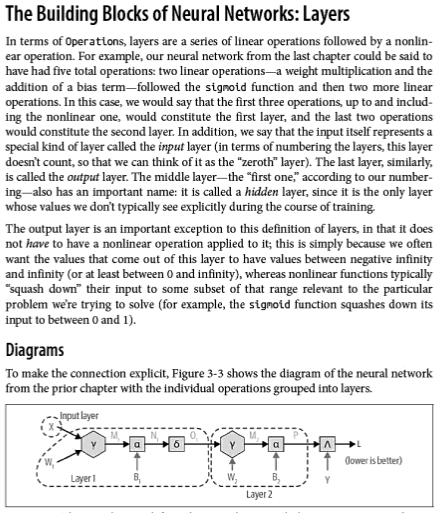
7. Deep Learning for Coders with Fastai and PyTorch: AI Applications Without a PhD
🚨 Ideal for: experienced Python programmers
💥 Major topics: fastai, PyTorch
Deep Learning for Coders with Fastai and PyTorch was written by the creators of fastai, Jeremy Howard and Sylvain Gugger. It’s tough to find books on fastai.
It’s one of the best deep learning books for Python programmers.
💡Fastai is a deep learning library with high and low-level components for deep learning domains.
🍷 Pairs well with the course Introduction to Deep Learning with PyTorch on DataCamp.
Using fastai and PyTorch, you’ll learn how to train a model on a variety of tasks such as:
- computer vision
- natural language processing
- tabular data
- collaborative filtering
Finally, you’ll implement deep learning algorithms from scratch and turn your models into web applications.

Good for people comfortable with TensorFlow and those who have prior ML experience…
– Avinash Sooriyarachchi, Customer
8. Deep Learning with R
🚨 Ideal for: intermediate R programmers
💥 Major topics: Keras, image classification, deep learning for text and sequences
Deep Learning with R by Francois Chollet and J. J. Allaire is one of the best deep learning books for intermediate R programmers.
It’s another book written by Francois Chollet, the creator of Keras.
While Keras was originally written for Python, it’s been adapted to R programming.
With intuitive explanations and examples, you’ll dive into the Keras deep learning library and learn about:
- deep learning for text and sequences
- setting up a deep-learning environment
- image classification and generation
And beyond.
9. Deep Learning with TensorFlow 2 and Keras
🚨 Ideal for: Python developers and data scientists
💥 Major topics: TensorFlow, Keras
Deep Learning with TensorFlow 2 and Keras by Antonio Gulli, Amita Kapoor, and Sujit Pal is one of the best deep learning books for Python developers and data scientists.
You’ll start learning TensorFlow 2 and Keras right off the bat. Then you’ll train your models in the cloud.
🍷 Pairs well with the Skill Path Build Deep Learning Models with TensorFlow on Codecademy Pro.
Finally you’ll discover Google tools that can automate machine learning workflows without complicated modeling.
10. Grokking Deep Learning
🚨 Ideal for: intermediate Python programmers with high school math skills
💥 Major topics: building and training neural networks, privacy
Grokking Deep Learning by Andrew Trask is one of the best deep learning books for intermediate programmers with high school math skills.
You’ll go on a journey by learning the science behind deep learning. Then you’ll move on to building your own neural networks.
Using Python and its library NumPy, you’ll train your own neural networks.
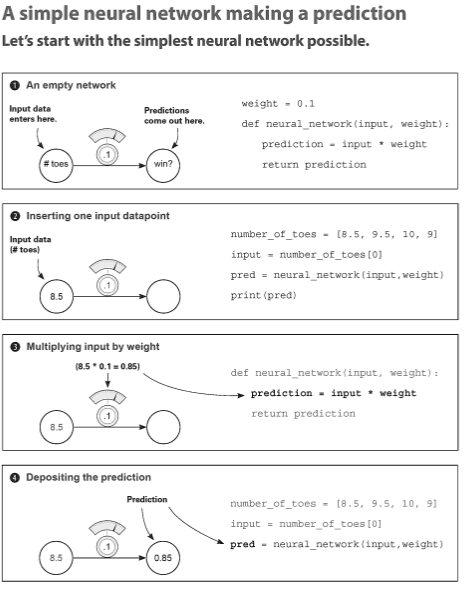
Best Deep Learning Books: Conclusion
Today we looked at the best deep learning books of this year, and three came out on top.
🔥 Best Overall 🔥
Deep Learning: A Visual Approach
💥 Best for Newbies 💥
Practical Deep Learning: A Python-Based Introduction
💸 Best Value 💸
Deep Learning with Python, 2nd Edition
So whether you’re looking for the best book, something newbie friendly or value-conscious, we think there are deep learning books for just about everyone.
Up Next:
- Top 11 Python Books for Data Science [Learn Data Science using Python]
- 9 Best Data Science Courses for Beginners [+4 Data Science Learning Paths]
- 11 Best Python Machine Learning Books [Learn Machine Learning ASAP]
- 6 Best Machine Learning Courses and Specializations [Includes Andrew Ng Stanford Course!]
- Best Machine Learning Courses for Beginners [Bonus: Intermediate and Advanced Machine Learning Courses]
What are the best deep learning books this year?
We came up with three of the best deep learning books for this year. Overall, we think Deep Learning: A Visual Approach is the way to go. For newbies, we think Practical Deep Learning: A Python-Based Introduction is the best deep learning book. And if you’re looking for value, we think you’ll find it in Deep Learning with Python, 2nd Edition.
Is the book Deep Learning: A Visual Approach by No Starch Press worth it?
We think Deep Learning: A Visual Approach by Andrew Glassner is worth it. It’s the newest deep learning release on No Starch Press. Unlike many deep learning books, you don’t need to know complex math. Rather you’ll learn deep learning algorithms with conceptual explanations. And with color illustrations, analogies and real-world examples, you’ll learn key deep learning concepts including how deep learning systems learn to play human games, image classification systems identify people in photos, text generators create stories, and much more. In the accompanying GitHub repository, you’ll find plenty of Python notebooks so you can start writing your own programs.
Is the fastai book Deep Learning for Coders with Fastai and PyTorch worth it?
We think Deep Learning for Coders with Fastai and PyTorch is worth it. It was written by the creators of fastai, Jeremy Howard and Sylvain Gugger. It’s one of the best deep learning books for Python programmers. Using fastai and PyTorch, you’ll learn how to train a model on a variety of tasks such as computer vision, natural language processing, tabular data, and collaborative filtering.
